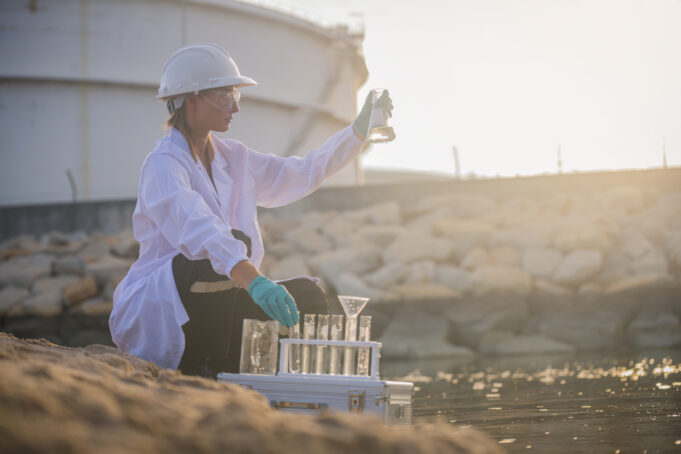A few weeks ago we covered research published in the Society of Petroleum Engineers’ Journal of Petroleum Technology that laid out the possibilities of mining rare earth minerals from Produced Water, a byproduct of oil and gas production. This week we delve into a company that’s betting on the profitability of another toxic byproduct: Desalination brine. The combination of high operational costs, environmental impact, and the logistical challenges associated with brine disposal has limited the widespread adoption of desalination technology, especially in regions where cheaper alternatives are available. The surge in desalination as a solution to global water shortages has brought about environmental concerns, particularly regarding the energy-intensive processes involved and the disposal of brine byproducts.
However, a pioneering initiative by the startup Capture6 is set to redefine the narrative by integrating carbon capture technology with seawater desalination efforts, promising a sustainable future for both water supply and carbon reduction. Desalination plants, crucial for supplying fresh water in drought-prone regions, face criticism for their environmental impact, notably the production of brine—a toxic byproduct harmful to marine ecosystems—and significant energy consumption contributing to greenhouse gas emissions. The challenge is twofold: supplying fresh water sustainably and mitigating the carbon footprint of such essential operations. Capture6’s venture, dubbed Project Octopus, presents an innovative approach to these challenges. The project, to be piloted in South Korea, aims to capture carbon dioxide from the air using brine from desalination processes. This not only offers a method to reduce the carbon footprint but also tackles the issue of brine disposal by turning it into a resource for carbon sequestration. Furthermore, the process yields an additional supply of fresh water, addressing the water scarcity problem head-on.
Project Octopus leverages a liquid sorbent derived from the salt in desalination brine to react with atmospheric CO2, producing a stable, limestone-like compound that securely locks away the carbon. This synergy between desalination and direct air capture (DAC) technology could revolutionize how industries perceive and manage their waste, transforming it from an environmental liability into a valuable asset in the fight against climate change. Despite the potential benefits, the energy requirements for DAC and desalination are considerable, with current operations largely dependent on fossil fuels. The environmental viability of such projects hinges on advances in energy efficiency and the transition to renewable energy sources to power these processes. Critics and researchers alike emphasize the importance of ensuring that the net impact of integrated facilities like Project Octopus is a reduction in overall emissions and not merely a redistribution of environmental burdens.
The ambition of Capture6, supported by collaborations with South Korean water utility K-water and wastewater treatment company BKT, reflects a growing recognition of the need for multidisciplinary solutions to climate and water challenges. While the pilot project’s scale is modest, its aim to expand significantly by 2026 illustrates the potential for scalable solutions that can have a meaningful impact on carbon reduction and water reclamation. Capture6’s innovative integration of carbon capture with desalination waste treatment stands as a beacon of how technology can bridge the gap between industrial necessities and environmental stewardship. As this and similar projects progress, they offer hope for sustainable practices that can simultaneously address the urgent needs for clean water and carbon reduction. For water treatment professionals, this represents a burgeoning field ripe with opportunities for innovation, collaboration, and leadership in environmental conservation.
Resources: WaterWorld, The Verge





